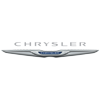 2007 Chrysler Nassau Concept Dimensions, Size & Specs
2007 Chrysler Nassau Concept Dimensions, Size & SpecsMeasurements of the 2007 Chrysler Nassau Concept, engineered for optimal performance and comfort
| Dimensions | |
|---|---|
| Length: | 4981 mm196.1 in16.3 ft |
| Width: | 1885 mm74.2 in6.2 ft |
| Height: | 1496 mm58.9 in4.9 ft |
| Weight Specifications | |
| Curb Weight: | 2041 kg4500 lbs |
| Tire Specifications | |
| Rims Size: | 22-inch rims:
|
| Tire Size: |
|
The 2007 Chrysler Nassau Concept is a striking full-size hatchback introduced as a prototype vehicle in 2007. This concept car exemplifies Chrysler's bold design language and innovation during that era, featuring an impressive length of 4981 mm (196.1 inches), a width of 1885 mm (74.2 inches), and a height of 1496 mm (58.9 inches). Despite being a prototype, the Nassau's substantial curb weight of 2041 kg (4499 lbs) reveals its solid construction and premium build quality. Equipped with large 22-inch rims (8.5 J x 22) wrapped in 245/40 R22 tires, its stance reflects a sporty yet luxurious demeanor. This hatchback stands out for blending the practicality of a five-door layout with coupe-like aesthetics, pushing the boundaries of Chrysler's design norms. Though never entering production, the Nassau Concept served as a design and technology showcase, influencing future Chrysler models' styling and engineering directions. Its spacious dimensions, elevated weight, and eye-catching wheel setup indicate an emphasis on comfort, road presence, and modern elegance, making it a notable example among 2000s concept vehicles.
Discover the standout features that make the 2007 Chrysler Nassau Concept a leader in its class
Have a question? Please check our knowledgebase first.
The 2007 Chrysler Nassau Concept is a large hatchback with impressive dimensions reflecting its prototype status. It measures 4981 mm (196.1 inches) in length, 1885 mm (74.2 inches) in width, and 1496 mm (58.9 inches) in height. These dimensions give the car a commanding road presence with a sleek yet muscular profile, typical of a concept car designed to showcase design and engineering innovation.
At 1885 mm (74.2 inches), the Nassau Concept is wider than many average passenger cars, which typically range around 1750-1850 mm. The wider stance enhances stability and road grip, especially during cornering, but it also means drivers need to be more cautious when driving through narrow urban streets or tight parking spaces. The width contributes to an aggressive and sporty aesthetic, complemented by its large 22-inch rims.
The Nassau Concept, with a length of 4981 mm (196.1 inches) and width of 1885 mm (74.2 inches), is quite large and may pose challenges fitting into standard home garages. Typical garage dimensions vary, but a common single-car garage is about 2.44 meters (8 feet) wide and 5.49 meters (18 feet) deep. While the Nassau might fit lengthwise, tight width clearance may be a concern. Owners would benefit from wider or custom garages to accommodate this car comfortably and to open doors fully without risk of damage.
At 1496 mm (58.9 inches) tall, the Nassau Concept is relatively low-slung compared to traditional hatchbacks, emphasizing a sporty and aerodynamic profile. The lower height reduces wind resistance, improving efficiency and high-speed stability, while enhancing the car’s sleek appearance. However, the reduced height might slightly limit headroom inside the cabin, creating a more intimate driving environment that balances style with comfort.
The curb weight of the Chrysler Nassau Concept stands at 2041 kg (4498 lbs), which is heavy for a hatchback but understandable given its status as a concept car with substantial design and engineering features. Heavier weight can impact acceleration and fuel efficiency, but may also translate into a solid, stable ride quality with enhanced safety. The weight reflects the large dimensions and premium materials likely used in this concept.
The Nassau Concept comes equipped with 22-inch rims measuring 8.5J in width and tires sized 245/40 R22. These large wheels contribute to a sporty and aggressive stance while improving grip and handling dynamics due to their wider contact patch. The low-profile 40-series tires provide responsive steering feedback but may result in a stiffer ride on rough surfaces. Overall, this setup enhances the car’s performance and visual appeal.
As a concept vehicle introduced in 2007, the Chrysler Nassau Concept doesn't have a direct predecessor since it was primarily a design and technology showcase rather than a production model. Compared to previous Chrysler hatchbacks from the early 2000s, the Nassau is significantly larger, both in length and width, reflecting a shift toward luxury and grand touring characteristics. Its size is closer to a full-size sedan or luxury hatchback rather than a compact model, showcasing Chrysler's vision for a high-end hatchback.
The Nassau Concept stands out among concept hatchbacks from the mid-2000s by its grand size, coupe-like silhouette, and luxury emphasis. While many concept hatchbacks explored compact urban formats, the Nassau aimed for a more executive, sporty proposition with extensive global luxury cues and large dimensions. Compared to similar concepts like the Audi A5 Sportback and BMW 5 Series GT of the time, the Nassau offers a more muscular presence with an emphasis on futuristic design and performance-oriented features.
The Chrysler Nassau Concept is a hatchback prototype unveiled in 2007, intended to showcase a blend of classic luxury and modern technology with bold design cues. It was never slated for mass production but was designed to provide a vision of Chrysler’s future styling and engineering direction. It combined elements of a grand tourer with hatchback practicality, demonstrating innovative approaches to size, comfort, and performance.
Despite its sporty and sleek exterior, the Chrysler Nassau Concept was designed to offer a spacious and comfortable interior, suitable for grand touring. Its large overall size, especially length and width, allowed for ample passenger space and cargo flexibility typically associated with hatchbacks. Although being a concept, the interior likely balanced luxury materials and advanced features with practical usability, offering a comfortable driving experience compatible with its grand and executive styling.
